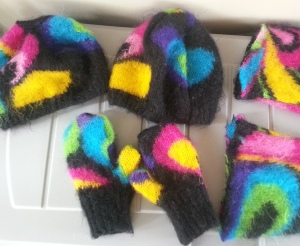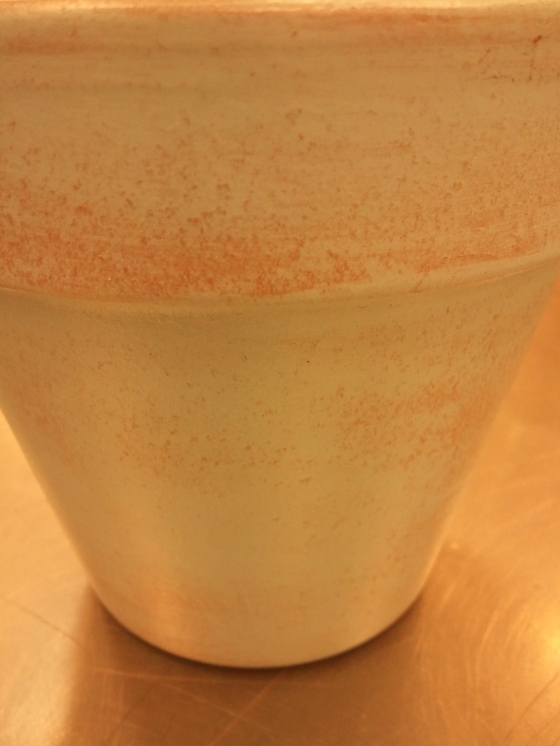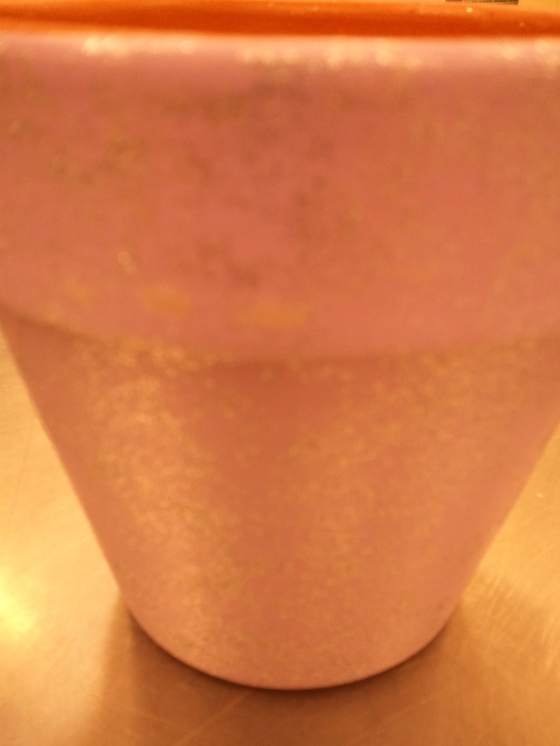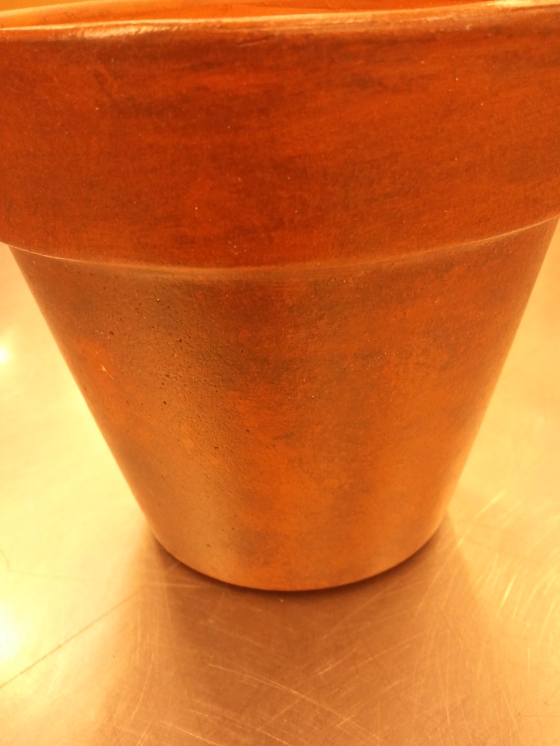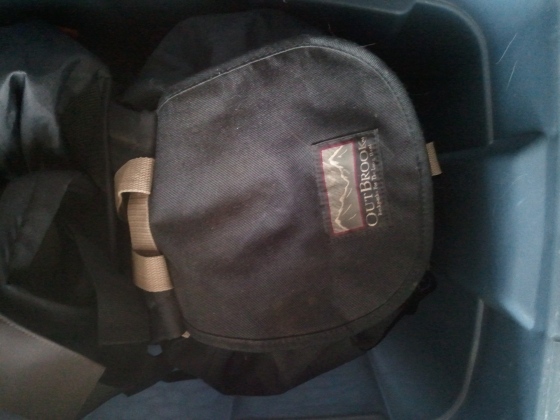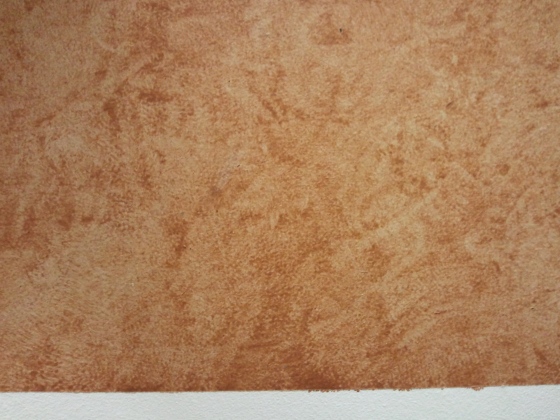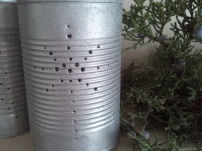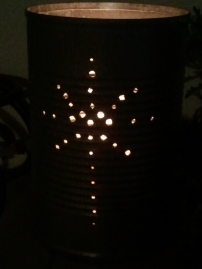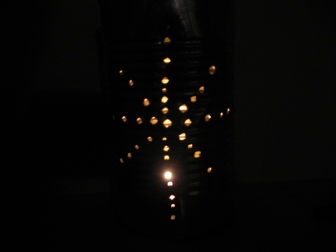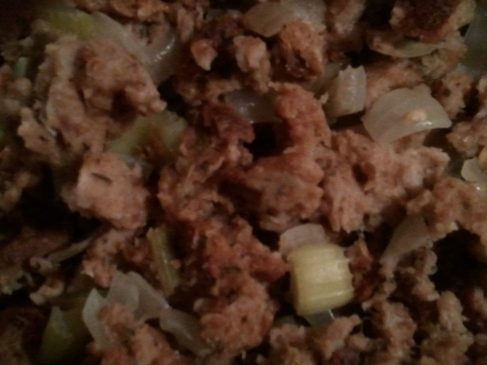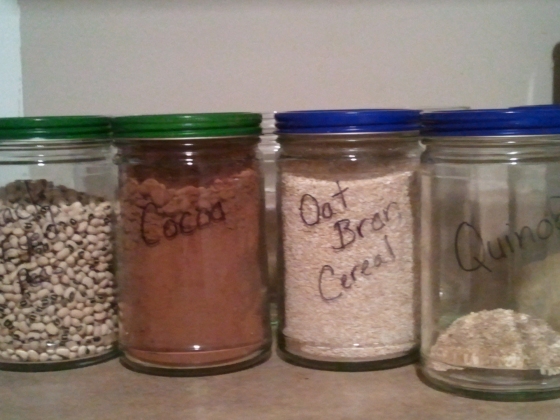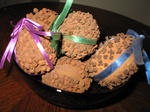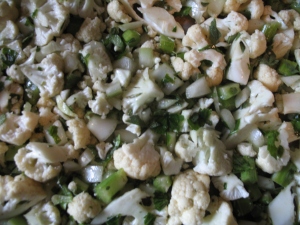These alternative cooking methods require some type of fuel to be purchased and stored. Be sure to be familiar enough with them to know how to use them safely. Some should never be used indoors. Try them out before you need to use them.
In case you missed it Alternative Cooking Part 1
Storing and using fuels for cooking and heating.
Butane
I have one of these! After a power outage in January many years ago and no way to cook other than the grill outside I checked into indoor cooking methods. From what I read butane is safer than most fuels for indoor use. Always have adequate ventilation!
Butane is available in canisters that look similar to a can of spray paint. Just pop it in the stove and turn it on. No matches necessary. I have not yet used mine for emergency purposes but I have used it many times when camping.
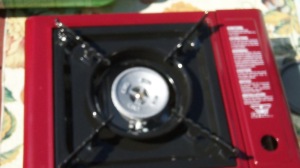
Butane Stove
Denatured Alcohol
This is not actually a stove but a way to use denatured alcohol with other stoves.
Remove the cardboard tube from a roll of toilet paper. Place the roll inside a clean empty paint can (available at hardware stores or paint stores). Fill the can with denatured alcohol (also available in the paint department). Securely attach the lid. Store until use.
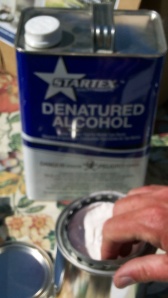
Denatured Alcohol
Kerosene
There are many types of kerosene stoves. Some are heater/stove combinations. Kerosene is one of the less expensive fuels and can be purchased in 1 gallon, 5 gallon, and possibly larger containers.
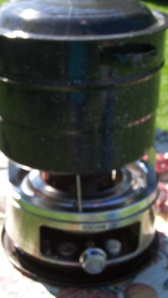
Kerosene Stove
Propane
Propane is available in sturdy tanks of various sizes – 1 lb up to 100 lbs or more. This small grill (on the right) uses the small 1 lb canisters of propane. The larger tanks are refillable.
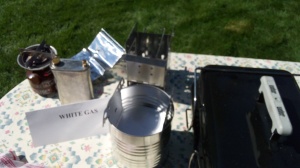
White Gas, Propane, Sterno
White Gas
Never use indoors! The stove to the left (above photo) is one gas stove that uses white gas (also sold as Coleman Fuel). Many Coleman camping stoves also use white gas but an adaptor can be purchased for using propane tanks instead.
Sterno
Sterno is a fuel made from denatured alcohol and gel alcohol. In my experience they do not store very well for long. This stove (below) is a double burner if you use a sterno under each side.
There are a couple stoves in the photo above (in the middle) which could be fueled with sternos or charcoal.
You can also build sterno stoves of various types.
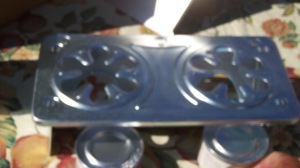
Double Sterno Stove
Backpacker Oven – Bemco
This backpacker oven is fueled by a gas stove. It folds up nicely so may be a good option if you were hauling your equipment.
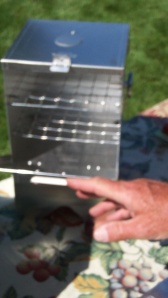
Backpacker Oven – Bemco
More information about fuels for cooking and heating
